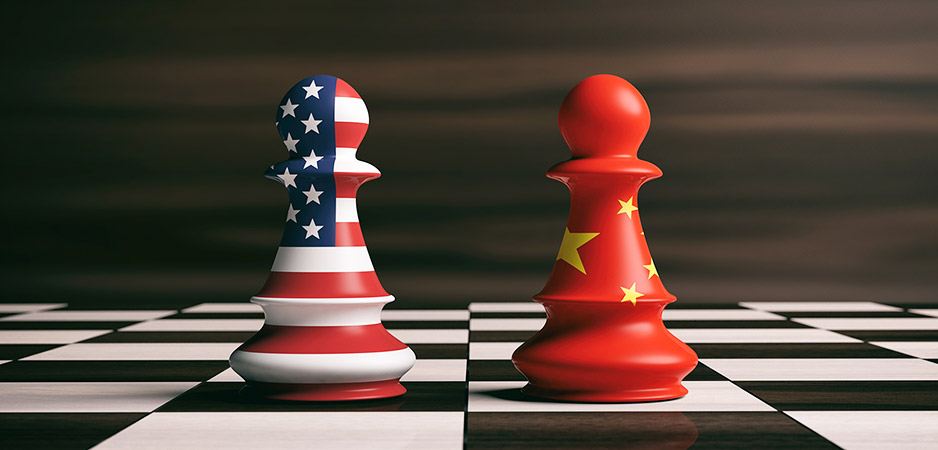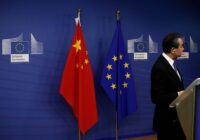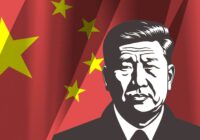A conflict between the United States and China seems increasingly likely. A trade war that began several years ago has had economic repercussions for both sides. In the South China Sea, Chinese aggression against Taiwan is checked by the US military. In cybersphere, the war has already begun, as American and Chinese hackers attempt to exploit weaknesses in each other’s online defenses for military, political and economic information.
With this ever-increasing antagonism between China and the US playing out on the world stage, little imagination is required to appreciate the catastrophic result of a conflict between the world’s two largest economies with nuclear triads.
Forecasting the US-China Relationship
Several years ago, Dr. Graham Allison of Harvard University unveiled a historical pattern where increasing tensions between rising and reigning states led to diplomatic friction and war. Allison dubbed this pattern Thucydides’ Trap, in honor of the Athenian strategos who identified “the growth of the Athenian power, which [put] the Lacedaemonians into fear” as a cause of the Peloponnesian War between 431 and 404 BC. Allison identified 16 cases throughout history in which the rise of a rival state provoked a response from an existing hegemonic power. In 12 of those cases, titanic wars followed, while peace prevailed in only four.
So, what lessons do the four cases with a peaceful ending offer when considering the nascent Sino-American rivalry? Close examination reveals that military, economic and political considerations contributed to a diplomatic decision for peace. In every case, both sides were vulnerable to substantial military losses in terms of personnel and equipment. The winner of the contest would find economic gains that paled in comparison to what they could have achieved in peacetime, and the loser could expect nothing short of economic devastation. Likewise, winning these conflicts could leave the victor weakened politically and almost certainly lead to the deposition of the loser. Victory in each case would have been Pyrrhic in human, economic and political terms. Defeat would have been near annihilation.
Thus, the four cases in which adversaries escaped the trap provide potential avenues for China and the US to do the same.
Spain vs. Portugal
In the late 15th century, the Iberian Peninsula held two of Europe’s economic and military powerhouses: Spain and Portugal. In Portugal, the reign of Henry the Navigator ushered in a period of exploration and colonization in Africa. Through a combination of squeezing out rivals and occupying key positions in the Eastern Atlantic, Portugal was able to utilize important sea lanes to facilitate trade with western Africa. However, the War of Castilian Succession between 1475 and 1479 ended with a unified Castille and Aragon, greatly shifting the balance of power by creating a unified Spain.
After the Reconquista ended with the capture of Granada in 1492, Portugal’s trading empire was exposed to a newly united Spain. Flush with captured Muslim treasure and in possession of an experienced military, Ferdinand and Isabella needed only to look west to find targets for future expansion. Later that year, the discovery of the Americas and the potential for economic dominance over two continents made war even more likely. Yet Spain and Portugal were able to negotiate the Treaty of Tordesillas in 1494. In doing so, they averted a potentially brutal military conflict.
Subsequently, Spain and Portugal concentrated their militaries and economic might into their colonial empires. Spanish colonies in Latin America and the Pacific created a colonial empire that only crested in the 18th century. Portugal’s possessions in Brazil, Africa, India and the Far East allowed it to access spice markets, and it generated a Portuguese-Indian sea trade monopoly. Though both empires eventually faded, their shared peace allowed each of them to experience massive economic growth — albeit at the cost of the indigenous peoples they attacked and enslaved in doing so.
The example illustrates an emphasis on foreign trade and domestic investment instead of escalation to war. As a result of their peaceful settlement of tensions and the ensuing economic boom, Spain and Portugal became more politically stable. The new Spanish monarchy consolidated its power after 1492, making its previously multifaith state into a Catholic stronghold and ensuring that the ties between Aragon and Castille were permanent. Meanwhile, spurred on by strong trade from their colonies, Portugal was able to endeavor its Renaissance.
The United States vs. the United Kingdom
The precipitous rise of American industrialism and the modernization of the US Navy challenged British domination of the seas at the turn of the 20th century. As American factory output, as well as iron and steel production, surged, the US built a formidable modern battle fleet of the latest capital ship designs. Consequently, the British government realized that the cost of a conflict was something it could ill afford. By the early 20th century, the first lord of the Admiralty admitted that the United States could create a larger navy than the British Empire.
A territorial dispute over Venezuela in 1895 threatened to ignite a third Anglo-American war, creating economic panic. By 1901, the British Admiralty realized that the US Navy would soon possess the potential to outstrip the British Grand Fleet. Thanks to the Spanish-American War of 1898 and the leadership of President Theodore Roosevelt, American naval tonnage had tripled from 1900 to 1910. Britain’s ability to maintain a stronger navy than its allies was threatened by this massive growth.
Meanwhile, Britain was also engaged in a naval race with Germany, its primary antagonist during the era. The rapid construction of the German high seas fleet with the latest armor and guns threatened the British coastline and maritime trade routes in the event of a war. Faced with two bids for naval supremacy, the UK concentrated on the German threat and ignored American naval competition. By exempting the US from the two-power standard (to have as many battleships as its next two great competitors, plus 10%), and by leaving the Roosevelt Corollary to the Monroe Doctrine unchallenged, Britain was able to deescalate the potential conflict between the two countries.
As a result of this diplomatic and military resolution, Britain’s prudence soon netted extensive economic and national security gains. As the Great War commenced, Britain’s war economy relied increasingly on raw materials, munitions production and food supplies from the United States. This ongoing trade, coupled with Imperial Germany’s unrestricted submarine warfare and the revelation of the Zimmerman Telegram, helped propel the US into declaring war on Germany in April 1917 and thus into becoming an ally to its onetime rival. By averting a war, Britain was able to win another, one with truly disastrous consequences for European liberty had it lost.
Although its enemies were dismembered or subjected to humiliating terms that sowed the seeds of political violence and the Second World War, the UK enjoyed a period of political continuity, which helped its victory against Nazi Germany in 1945 and led to a more gradual dissolution of the British Empire by the 1960s.
The Soviet Union vs. the United States
Following a joint victory in World War II, tensions rose rapidly between the United States and the Soviet Union. A 40-year rivalry and a nuclear arms race threatened the world with a mutually annihilating conflict. But despite multiple flashpoints, such as the Berlin Blockade of 1948-49 and the Cuban Missile Crisis in 1962, the Cold War never fully went hot.
Though the phrase “mutually assured destruction” is typically used to refer to destruction by nuclear weapons, a conflict even before both sides wielded large arsenals could have been catastrophic. The Soviet Union was savaged by the Second World War with an estimated 24 to 27 million deaths and could not afford another conflict in the immediate aftermath. Though the United States held a stronger economic position, it realized that an invasion of the Soviet Union was likely to end the same way it did for the Germans in the summer of 1941. Thus, for both sides, victory would have come at too great a cost.
Reeling from the cost of total war from 1941 to 1945, the Soviet Union quickly repaired its economy and produced notable growth consistently. Its annual gross national product (GNP) rose by 5.7% from 1950 to 1960 and 5.2% from 1960 to 1970. At the same time, the US experienced unprecedented development. This was due in part to geographic isolation from Europe during World War II, which prevented extensive damage to American industries. The inception of new industries such as television, the rise of suburbia and government investment in infrastructure helped the US economy expand continuously for decades after 1945. The resources for each nation’s respective economic success would not have been available if they had chosen to start a third world war.
Extensive proxy wars led by the US and the Soviet Union offered glimpses of the destruction and economic hardship that would have ensued if NATO combated the Warsaw Pact. From 1955 to 1975, the United States fought a desperate containment war against insurgents in Vietnam that ended with a communist victory and the destabilization of several other countries in Southeast Asia. In Afghanistan, the Soviets spent 10 years trying to suppress the mujahadeen before their ignominious withdrawal in 1989.
Both conflicts resulted in the US and Soviet Union suffering tens of thousands of casualties among military service members, while causing even higher death tolls among the people of Vietnam and Afghanistan. Those wars also cost the US and the Soviet Union large sums of money that could not be regenerated, prompting economic hardship. The price of these proxy wars, terrible as they were in their own right, offered a window to the horror that would have ensued if the two superpowers had gone to war.
Eventually, the nonviolent end of the Cold War brought with it far greater political stability than a military tête-à-tête between the Americans and Soviets would have done. The new government of the Russian Federation was able to take power quickly and without international incident.
Germany vs. the United Kingdom and France
Following the reunification of Germany in 1990, the fear of a third world war was foremost on the mind of the British and French governments, who prepared to make an independent military alliance should Germany rearm. Understanding this fear, and with the horrors of the world wars within living memory, Germany opted against rebuilding its military to the same degree as earlier in the 20th century. The costs of the two world wars further dissuaded Germany from posturing in a way that would invite another total conflict. In this way, the Germans ensured peace for the foreseeable future in Europe.
As a result of decreased military tensions between the UK, France and Germany, Europe focused its energy on opening its borders and harmonizing its economic exploits. The continued expansion of the European Union and the introduction of the euro currency cemented these aims. All three partners benefited economically from this period of stability. In 2019, Germany had the largest national economy in Europe, followed closely by the UK and France, respectively. There is freedom of travel and ease of custom that furthers cultural interaction and social development, and Europeans are arguably happier, healthier and freer than they were at any previous point in history.
Subverting the Modern Trap
None of the four cases cited above is an exact clone of current relations between the United States and China. In both the Iberian and the American-British examples, there was a shared cultural background and a similar language between the two sides that doubtlessly contributed toward peace. During the Second World War, the US and the Soviet Union formed a military alliance that defeated Nazi Germany and Imperial Japan. By contrast, the US assisted nationalist forces during the Chinese Civil War of 1945-49 and combated Chinese communist soldiers during the Korean War of 1950-53. In the late 1980s, memories of both world wars provided Britain, France and Germany with enough incentive to resolve their issues peacefully.
This does not mean there are no similarities each side can use as a guide to peace. Economic incentives played a role in the reduction of tensions between Spain and Portugal. Similarly, ending the trade war between the US and China and resuming normal economic ties would help fill each nation’s coffers. The United States and Great Britain were able to ally before combating a single enemy. If climate change were viewed as a shared problem, the US and China could ally to combat it together.
Finally, the US and China do not share a land border, which was also true of the US and the Soviet Union during the Cold War; this reduces the opportunity for an overzealous or nervous service member to inadvertently start a conflict. Both countries, in addition, are important members of the United Nations, which mirrors how Britain, France and Germany were important members of the European Union and NATO.
Graham Allison’s analysis of relations between rising and reigning powers paints a grim future, one in which two powerful nations armed with nuclear weapons fight one another. To avoid such a future, the American and Chinese governments must strive to understand the lessons of the past. They must learn about the instances in which Thucydides’ Trap did not spring. Diplomacy between the two powers must always be pragmatic, and each side should understand that they will never get everything they want at the negotiating table. Finally, each side must scale down their military presence, particularly in the South China Sea, before a misstep or negligent discharge can potentially ignite a global war.
By recognizing the devastating harm that would occur in the event of a war, and the potential for economic growth and political stability if peace is sustained, two of the world’s largest powers can concentrate on shared goals and projects for mutual benefit. This will not be easy. But, as Benjamin Franklin once observed, “There has never been a good war or a bad peace.”
The views expressed in this article are the author’s own and do not necessarily reflect Fair Observer’s editorial policy.
Support Fair Observer
We rely on your support for our independence, diversity and quality.
For more than 10 years, Fair Observer has been free, fair and independent. No billionaire owns us, no advertisers control us. We are a reader-supported nonprofit. Unlike many other publications, we keep our content free for readers regardless of where they live or whether they can afford to pay. We have no paywalls and no ads.
In the post-truth era of fake news, echo chambers and filter bubbles, we publish a plurality of perspectives from around the world. Anyone can publish with us, but everyone goes through a rigorous editorial process. So, you get fact-checked, well-reasoned content instead of noise.
We publish 2,500+ voices from 90+ countries. We also conduct education and training programs
on subjects ranging from digital media and journalism to writing and critical thinking. This
doesn’t come cheap. Servers, editors, trainers and web developers cost
money.
Please consider supporting us on a regular basis as a recurring donor or a
sustaining member.
Will you support FO’s journalism?
We rely on your support for our independence, diversity and quality.






